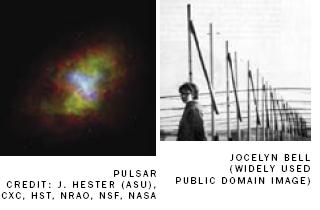Tonight let's explore a little above Zeta Taurus, and spend some quality time with a pulsar wrapped in the rest of the most famous supernova. As a matter of fact, we know that the Cancer Nebula is the remains of a star that exploded and was recorded by the Chinese in 1054. We can see it beautifully in long exposure shots - but have you ever taken enough time to look at M1?
Tammy Plotner and Jeff Barber, Universe Today

In 1968, during a radio telescope scan for quasars, Susan Jacqueline Bell discovered the first pulsar. The regularity of the flashes was so precise that a teacher in college, d.
A. The Hives thought they were picking up some sign. When the amount of objects multiplied, it became clear that this is a natural phenomenon. Two co-directors of the project, Hewish and Ryle, later matched Bell's observations to a rotating neutron star, earning them the 1974 Nobel Prize in Physics and a proof of an early theory from J. Robert Oppenheimer.
Tonight let's explore a little above Zeta Taurus, and spend some quality time with a pulsar wrapped in the rest of the most famous supernova. As a matter of fact, we know that the Cancer Nebula is the remains of a star that exploded and was recorded by the Chinese in 1054. We can see it beautifully in long exposure shots - but have you ever taken enough time to look at M1?
In a small telescope, M1 may disappoint - but focus on it a little. In the light that comes to your eyes a very strange feature. Let your eyes get used to it, and M1 will start to show "live" features - a sort of movement in what should be stationary. When the sky is clear enough, you may see a fixed star within the nebula, and up to six other stars can be seen.
Translation: Amit Oren
Project 365
UNIVERSE TODAY website

4 תגובות
Bad article
There is a lot of wrong information, it's a shame that the reliability of the data was not verified, very disappointing.
Please update by email about any new response...:-) Tosha, Israel cullan@netvision.net.il
Hello everyone.
We need to 'translate' these radiations and identify the Genesis 'And there was light' – – – . . .:-)